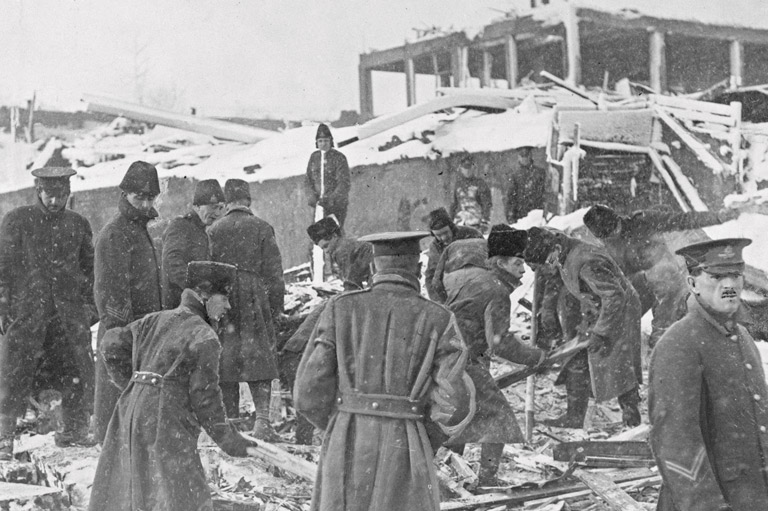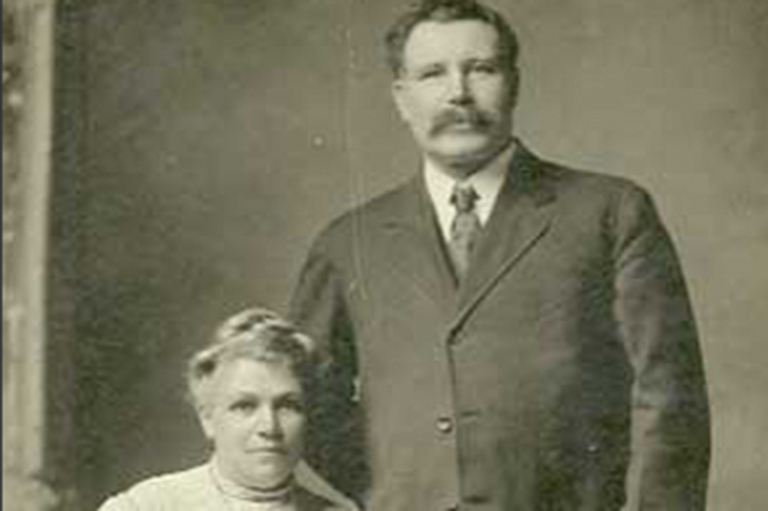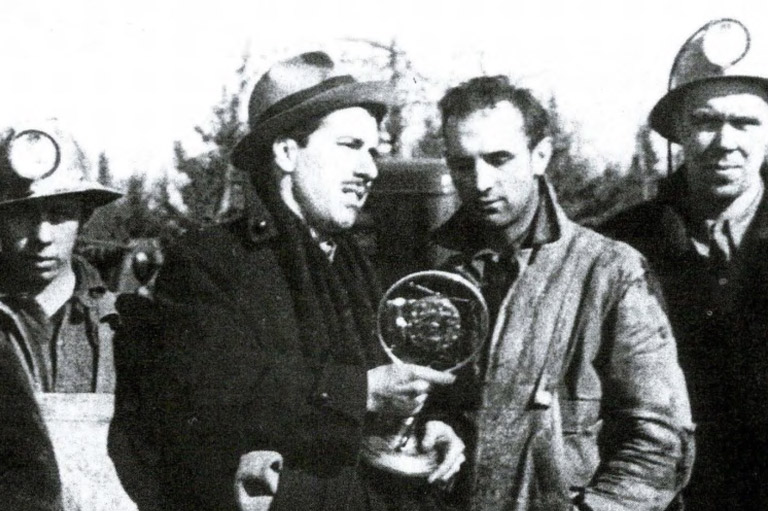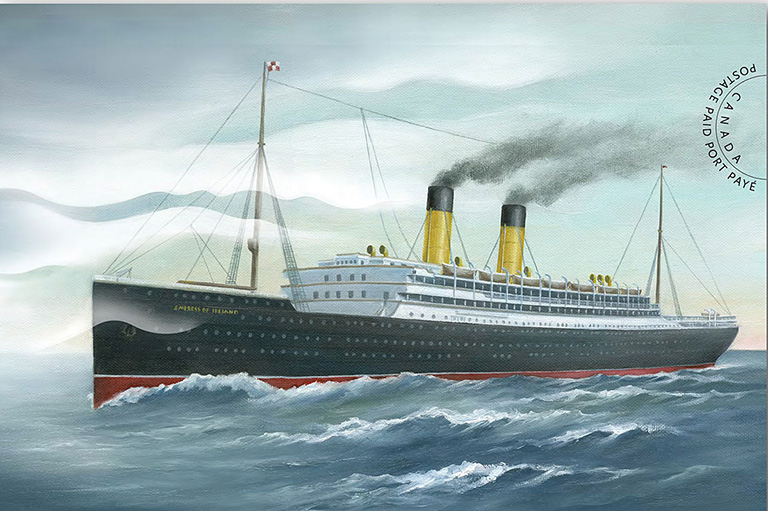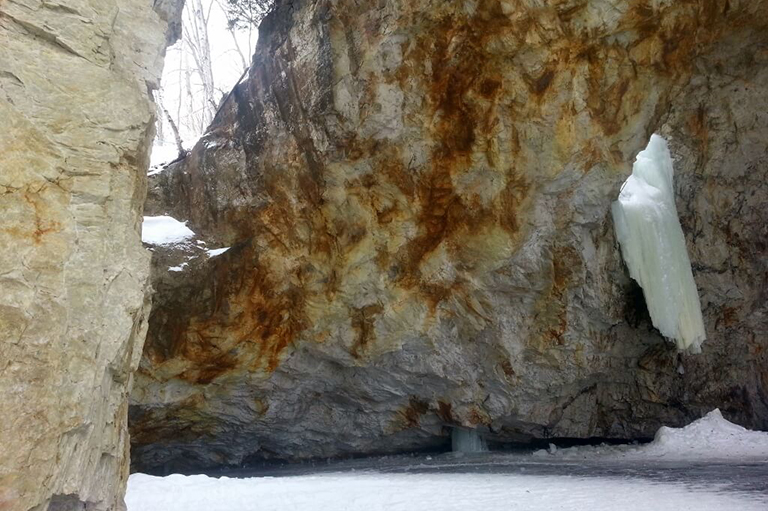Rising from the Ashes

The morning of December 6, 1917, was crisp with frost in the outlying areas of Halifax, the rays of the rising sun cascading into the harbour from across the sea. There was a light northwest wind, little tide, no precipitation, and a slight mist on the Narrows — the 1,660-metre-long, 400-metre-wide strait separating Halifax from Dartmouth, Nova Scotia, and connecting the outer harbour to Bedford Basin.
Halifax is a long, thin city built on the western shore of a great and natural harbour. It is divided by a hill on which stands the imposing Halifax Citadel. Then as now, the South End — on the far side of the Citadel from the harbour — was a residential section, while the North End — known locally as the Richmond District — was a predominantly industrial area. In this latter section were the wharves, dry dock, railway station, factories, and main barracks for military personnel. The North End was also the home of the working class, whose cheaply constructed wooden houses covered the hillside that sloped down to the harbour.
On that December day in 1917, the North End was bustling with ordinary morning activity. David Hinch, a fifty-six-year old boilermaker, and his teenage son Leo, a Canadian Press messenger boy, had already gone to work, leaving behind David’s wife, Louise, and his two other teenage sons, Harold and John, along with his baby granddaughter, Catherine, in their modest home at 18 Richmond Street. About two kilometres away, six-year-old Jean Holder and her older sister Doris were walking down Cunard Street on their way to Chebucto School. Meanwhile, a few blocks to the east of Cunard Street, Rev. Henry Ward Cunningham of St. George’s Anglican Church was sipping his coffee in the rectory at 43 Cornwallis Street.
With 7 uniquely curated newsletters to choose from, we have something for everyone.
All around the neighbourhood, naval personnel, longshoremen, stevedores, freight handlers, and foundry, factory, and warehouse workers attended to routine duties; shopkeepers opened stores; and scores of children made their way to school. However, despite these signs of normalcy, train dispatcher Vincent Coleman knew that something terrible was going to happen.
Near Coleman’s wooden dockside office, the French freighter Mont-Blanc was aground at Pier 6 and ablaze. Curious onlookers had stopped to stare, attracted by the spectacle of the burning ship. What Coleman and only a handful of people in the city knew was that Mont-Blanc carried a cargo of munitions, including TNT, picric acid, gun cotton, and benzol. Mont-Blanc was a floating time bomb.
Coleman realized that he had to act. Knowing that train Number 10 — the 8:55 a.m. express from Saint John, New Brunswick, carrying almost three hundred passengers — would pass directly in front of Pier 6, he telegraphed to the station in Truro, Nova Scotia, one hundred kilometres away: “Hold up the train. Ammunition ship on fire at Pier 6 and will explode. Guess this will be my last message. Goodbye.” At exactly 9:04:35 a.m. an enormous red flame shot up through Mont-Blanc’s decks, and the ship spectacularly self-destructed. The blast instantly killed the heroic Coleman and caused Canada’s greatest maritime disaster.
The 2.9-kiloton detonation was so powerful that Mont-Blanc virtually disintegrated, and Pier 6 vanished entirely both above and below the waterline. Leo Hinch, who had just left the Canadian Press newsroom on a routine errand, saw a blinding flash of light and a giant fireball, then he heard a horrendous, ear-splitting roar and crash. The earth trembled, and he fell to the ground as a shrapnel-like barrage of razor-sharp steel, wood, and iron fragments spewed onto the streets of Halifax and Dartmouth. In the rectory, Cunningham heard a tremendous crash, followed by a mighty rush of air that shattered the house windows and threw him beneath a table. A ten-metre tsunami was created in the harbour, and a massive pressure wave levelled buildings, snapped and toppled trees, and bent metal rails within a radius of two kilometres. Soon a kilometre-high pillar of dense, greyish smoke rose over the explosion’s epicentre, and a greasy, black mixture of oil, soot, and water poured down on Halifax and Dartmouth.
The force of the blast was cataclysmic: A 450-kilogram piece of Mont-Blanc flew through the air and crashed through a classroom roof of the nearby Naval College; a 564-kilogram anchor shank was hurled more than three kilometres across Halifax’s Northwest Arm onto Edmonds Grounds; and the ship’s stern cannon, its barrel partially twisted by the explosion, was launched nearly four kilometres to land in the vicinity of Albro Lake on the Dartmouth side of the harbour. The explosion caused the collapse of the nine-storey brick Acadia Sugar Factory building, killing scores of workers both inside and on top of the structure.
Advertisement
Leo Hinch promptly abandoned his errand and ran through the chaos toward home. Also running into the heart of the destruction was Hinch’s co-worker at the Canadian Press, journalist James Hickey, who described the devastation in the North End: “Women rushed terror-stricken through the streets, many of them with children clasped to their breasts. In their eyes was a look of terror as they struggled on with bloodstained, horror-stricken faces, endeavouring to get anywhere from the falling masonry and crumbling walls. By the littered roadsides as they passed, there could be seen the remains of what had once been human beings, now torn and mangled beyond realization.”
While the explosion broke windows and shook articles off shelves one hundred kilometres away in Truro — and was heard as far as four hundred kilometres distant — the scale of the destruction at and near ground zero was calamitous. In a ten-square-kilometre area of Halifax-Dartmouth populated by sixty-five thousand people, two thousand died, nine thousand were injured, and nearly three hundred sustained such serious eye injuries that surgeons had to remove one or both of their eyes. More than sixteen hundred houses were destroyed and twelve thousand damaged, leaving more than six thousand people homeless. “Street after street is in ruins and flames swept over the district,” Hickey reported.
Leo Hinch finally reached Richmond Street, less than three hundred metres from where the ship had exploded. He discovered that his house had collapsed and burned to the ground. His mother, brothers, and baby niece were all dead. The city’s North End Richmond District lay in ruins: houses demolished with not a single wall left standing; gas mains and water pipes ruptured; tree trunks splintered; telegraph and telephone poles toppled; railway and streetcar tracks wrecked; and roads littered with animal and human remains.
Cunningham ventured out amid the debris to minister to parishioners and offer what help he could. But, to make immediate recovery efforts more difficult, the weather deteriorated. Late in the day a northwest gale hit the city, lowering the temperature overnight to –9˚C and dumping more than forty centimetres of heavy, damp snow that left the streets deep in drifts. Tents with mattresses and blankets were set up in the Commons for people left homeless. Others, like six-year-old Jean Holder and her family, slept in their damaged houses. “Snow sifted in around the hastily covered windows and doors; the piano in the parlour was buried in snow,” she later recalled. “It was months later before our home was repaired.”
Save as much as 40% off the cover price! 4 issues per year as low as $29.95. Available in print and digital. Tariff-exempt!
Relief efforts began almost immediately, led by Lieutenant-Governor MacCallum Grant and local civic and military officials. Soon rescue trains began to arrive from across eastern and central Canada and the northeastern United States, carrying medical teams, skilled labourers, and donations of food, clothing, blankets, and building materials. More than $30 million was donated by Canadian federal, provincial, and municipal governments. The state of Massachusetts provided $750,000. Millions of dollars more arrived from governments around the world.
As a clergyman, Cunningham signed hundreds of cards that enabled people to obtain relief in the form of food and clothing. The soft-hearted reverend admitted to signing cards “for undesirables, knowing them to be so, but could not draw the line.” Meanwhile, David Hinch, the boilermaker, had the traumatic task of identifying the charred bodies of his wife and sons — and later his brother Joseph Hinch and his ten children. The basement of Chebucto School, where Jean Holder was headed on the day of the explosion, was turned into a morgue, and the students were transferred to other schools.
Just days after the explosion, R.M. Hattie, the secretary of Halifax’s Town Planning Board, received a letter from his acquaintance Thomas Adams, a town planner who was working for the Canadian Commission of Conservation in Ottawa. Born in the Scottish village of Corstorphine, Adams was largely self-educated and had held various planning positions. In 1901 he had joined the Garden City Association — a group of utopian thinkers who aspired to build urban neighbourhoods with grassy parks, beautiful public spaces, and good transit, instead of roaring roadways and dilapidated slums. Adams imagined an ambitious new project for the North End.
“In face of the immediate horrors of the disaster I suppose it will be impossible to get people to think much of using the opportunity now given to try and improve the housing conditions of the class of people who were chiefly affected by the explosion,” he wrote to Hattie. “It will surely be a monstrous thing if temporary and unsanitary buildings are rushed up and afterwards left as permanent homes.”
Adams recommended that, once temporary shelters were built for the homeless, “work should then be started to erect strong and healthy cottages in concrete or brick and gradually to transfer the people from the temporary to the permanent buildings.”
Perhaps to his surprise, the Halifax Relief Commission (HRC) hired Adams — along with George Ross, one of Canada’s pre-eminent architects — to lead the reconstruction of the devastated North End. The HRC, which consisted of two Halifax judges and the former mayor of Oshawa, Ontario, was appointed by a federal Order-in-Council under the War Measures Act on January 22, 1918, with a mandate to administer a $30-million fund for medical care, social welfare, compensation, and reconstruction for the benefit of survivors of the explosion.
Following Adams’ advice, construction began on temporary units to accommodate about 2,500 people. By March 1918, tradesmen had assembled 320 wood-frame row houses with tarpaper exteriors, beaverboard interiors, and full indoor plumbing in the Halifax Exhibition Grounds. The two-storey units rented for twelve dollars per month and were called McCall Apartments in honour of Governor Samuel McCall of Massachusetts for the rapid relief efforts his state had mounted following the disaster. The Massachusetts-Halifax Relief Fund set aside $500,000 for a warehouse where those in need could obtain tables, chairs, chesterfields, and other items at no cost.
With immediate housing needs satisfied, Adams and Ross toured the devastated North End Richmond District in April 1918 and came up with a plan for the permanent reconstruction of part of the neighbourhood. The plan was Adams’ chance to turn his vision of a “garden city” into reality. Built in a 9.3-hectare area of ruined wooden homes, schools, and churches, it would become Canada’s first public housing project and was dubbed the Hydrostone District.
The Hydrostone District was laid out by Adams in a rectangular grid of ten short, parallel streets bordered by Duffus Street to the north, Young Street to the south, Isleville Street to the west, and Novalea Drive to the east. The streets were lined with row housing and separated at regular intervals by a series of twenty-seven-metre-wide, grass-covered, tree-lined boulevards that acted as communal outdoor spaces. The plan also called for a row of shops along Young Street and a large public park at Fort Needham. In addition, there were concrete sidewalks, paved roads, and narrow back lanes for parking, service traffic, garbage collection, utilities, and storage.
The Hydrostone project took its name from the concrete blocks used to construct the houses. The blocks were manufactured at the specially built Canadian Hydrostone Plant on the southeastern edge of Halifax, following a process developed by the Hydro-Stone Company of Chicago. They were made from a mixture of gravel, crushed stone, sand, Portland cement, and water from a nearby beach. The mixture was hardened and moulded under seventy thousand kilograms of pressure and a given a stucco-like finish. The resulting material, a precursor to cinder blocks, was clean and bright, fire-resistant, relatively inexpensive, and quickly produced. The finished blocks were transported to the harbour by a narrow-gauge railway and barged to the Narrows. Transporting the heavy stones to the Hydrostone construction site was difficult due to the steep rise from the harbour; however, Adams solved this problem by creating two new diagonal streets — Devonshire Street and Dartmouth Street.
Ross designed the two-storey houses in six different styles. Slate roofs of various types — such as hip, gable, and gambrel — along with detailing of windows and entranceways, provided attractive exterior features. By adding wood and stucco, front and back porches, and terraces, the houses were given a Tudor Revival feel. A four-bedroom row house was built at an estimated cost of $1,800, which rose to $2,500 for a detached house.
Advertisement
In August 1919 the HRC released a poster that boasted: “Men say the day of miracles is passed; but there is a vision of regeneration here that fringes on the miraculous. As though overnight, the North End has shaken off its incubus of holocaust. Ruin and desolation have given place to the new order. A new city has risen out of the ashes of the old.”
From 1919 to 1920 survivors applied for the 324 rental units, and on June 9, 1920, the Halifax Evening Mail announced: story reported that “all households were occupied” and that the 1,300 new occupants were “predominantly people who lived in the Devastated area before the Great Explosion.” One of them was the boilermaker David Hinch, who had lost so many loved ones in the disaster.
On February 10, 1921, in a Halifax Evening Echo story headlined “What I think of the Hydrostone,” tenant Maudie Upham observed, “We are not afraid to go asleep at night because of the fire and we don’t have to wade through mud up to our necks [thanks to the paved streets]. We like the new shopping district because we pay less and save on car fare.” Robert Noble said he liked the “pretty boulevards.” He commented: “The houses are nice inside. It is a lot different than the homes we had in old Richmond before the disaster.”
With the HRC acting as property manager, the Hydrostone units were rented until the 1950s, when they were gradually transferred to freehold ownership. In 1994 the Hydrostone District was designated a National Historic Site. The strength of its original planning concept and its architectural quality have enabled the district to age gracefully and to withstand more than a century of use.
As the neighbourhood maintained its attractiveness, the market value of the properties appreciated steadily. A two-bedroom unit on Hennessey Street that was built in 1919 for $1,800 sold for $315,000 in 2011, $357,000 in 2013, and $569,900 in 2021. Today the houses are largely owned by young professionals and families. According to Lindell Smith, the city councillor for Halifax Peninsula North and a lifelong resident of the North End, “the North End area, including the Hydrostone District, has become so gentrified that it is difficult for working-class people to live there.”
Each year on the morning of December 6, people gather in a service at Fort Needham Memorial Park to listen to the carillon bells of the Halifax Explosion Memorial Bell Tower and to remember the victims of the disaster. While no survivors remain to participate in this event, more than one thousand houses in the North End — including the 324 Hydrostone dwellings — stand as an enduring testimony to the city’s recovery and renewal.
We hope you will help us continue to share fascinating stories about Canada’s past.
We highlight our nation’s diverse past by telling stories that illuminate the people, places, and events that unite us as Canadians, and by making those stories accessible to everyone through our free online content.
Canada’s History is a registered charity that depends on contributions from readers like you to share inspiring and informative stories with students and citizens of all ages — award-winning stories written by Canada’s top historians, authors, journalists, and history enthusiasts.
Any amount helps, or better yet, start a monthly donation today. Your support makes all the difference. Thank you!
Themes associated with this article
Advertisement

